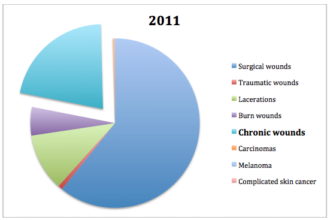The following is a commentary I was invited to submit for the ATA Daily News.
The following is a commentary I was invited to submit for the ATA Daily News.
In 2008, while working in a small rural hospital, I watched as some of our patients had to be transferred to a larger facility in our system to receive needed specialty consults. At the time, the hospitalist, emergency director and I wished we had telemedicine capabilities, but the funds for equipment were not available in our budget.
Then in 2010, I learned about the telehealth resource centers, attended my first ATA Annual Meeting and had the opportunity to experience telehealth technology in action across the Northwest, California and the Pacific Basin. I soon learned that the most effective implementations applied the technologies to solve specific challenges and problems.
These include:
• A rural hospital in Wyoming with excess pharmacy capacity assisting a critical access hospital in the region after the retirement of their pharmacist by providing remote order entry verification and support to physicians and other providers when local staffing was no longer an option.
• A system of community clinics turning to telehealth after losing access to specialists in psychiatry, endocrinology, neurology, hepatology and dermatology for their hard-to-reach migrant population.
• A community clinic being able to perform digital retinal eye exams for its diabetic patients, to be read by an ophthalmologist in another state.
• A hospital turning to an intensivist located two counties away to augment their existing physician staff and fill coverage gaps with remote care to patients in the intensive care unit.
• Multiple physicians and psychologists experiencing shifting demands on their time that no longer allow them to drive hours out to remote communities to hold monthly or weekly specialty clinics. Not wanting to disrupt access for these patients in already underserved communities, they turn to telehealth to facilitate the connections needed to continue care.
• California hospitals employing real time remote triage, diagnosis and monitoring as their fastest growing strategy to address increasing emergency department specialty coverage needs.
• Several physicians conveying their stroke outcome success stories – one reducing the first-contact neurology response time to less than 22 minutes at one hospital, and another increasing use of tPA by ten times despite only having two neurologists.
• The telehealth network in Montana that recognized the opportunity to leverage their existing infrastructure to facilitate community-wide health information exchange.
• A pilot study involving remote monitoring of blood glucose in an underserved Native Hawaiian population using Bluetooth-enabled smart phones and the development of plans to expand to monitoring blood pressure, weight and activity levels.
• And, in my own county of Santa Barbara (Calif.), I’ve been fortunate to facilitate the establishment of videoconferencing network between the five hospitals and public health department to enhance disaster preparedness and event communications and reduce non-productive travel time and costs.
Why does this matter? The rural stroke patient who shared his confidence in his local critical access hospital had it right when he told his neighbors:
“The telestroke program and similar programs mean that right here in Moab we have access to a major medical center. I urge you to support our hospital in any way you can. …”
Over this last year we have witnessed some movement toward elimination of traditional barriers to more widespread adoption of telehealth technologies. We will continue to realize success as value is demonstrated more broadly – improved access to needed care, patients having better outcomes and reduced costs.
We will face some new challenges, such as data breaches from malicious attacks, and growing pains with the highly complex ecosystem that includes wireless devices and mobile technologies. The merger of infrastructure and data in electronic health records, telemedicine and remote monitoring will continue – bringing us closer to realizing longitudinal health.
As I prepare for my second ATA Annual Meeting, I am grateful for the progress and recognize the opportunities for continued improvement. I believe the forecast is good and we will continue to see telehealth technologies applied to solve challenges – today, and in the future.
http://destinationata.com/content/finding-solutions-healthcare-challenges-telehealth-technologies







